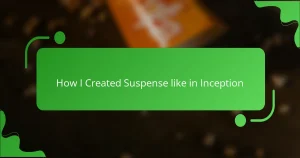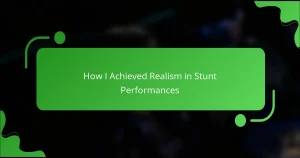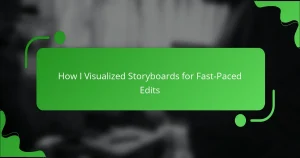Key takeaways
- Action short films deliver quick, high-energy narratives that emphasize sound design for emotional engagement and storytelling.
- Sound plays a critical role in shaping audience experiences, enhancing emotional weight, and creating immersive environments through music, dialogue, and sound effects.
- Techniques like dynamic soundscapes, strategic silence, and realistic Foley sounds are essential for impactful sound design in action films.
- Effective sound design integrates various elements to guide audience emotions, making scenes more engaging and memorable.
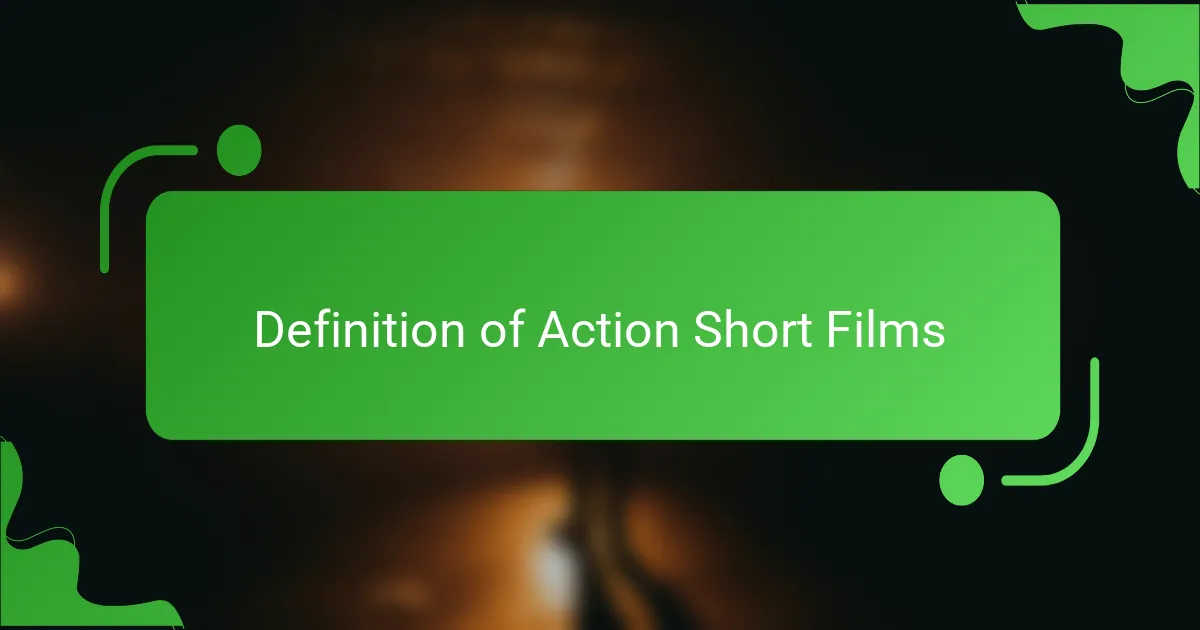
Definition of Action Short Films
Action short films are succinct cinematic pieces designed to deliver intense excitement and thrilling experiences in a brief format. They typically involve high-energy sequences, emotional moments, and rapid pacing, all wrapped up in a storyline that captivates the audience quickly. I remember the first time I watched an action short; it was like a jolt of adrenaline that lingered long after the credits rolled.
In crafting these films, every element counts—from direction to editing, but sound plays an undeniably crucial role. It not only enhances action sequences but also deepens the emotional connection to the narrative. Engaging sound design can make a chase scene feel more urgent or a moment of silence more poignant.
- Typically runs between 5 to 30 minutes.
- Combines elements like stunts, fight choreography, and visual storytelling.
- Contains a clear, engaging narrative arc despite its brevity.
- Focuses on high-energy sequences that convey action and emotion.
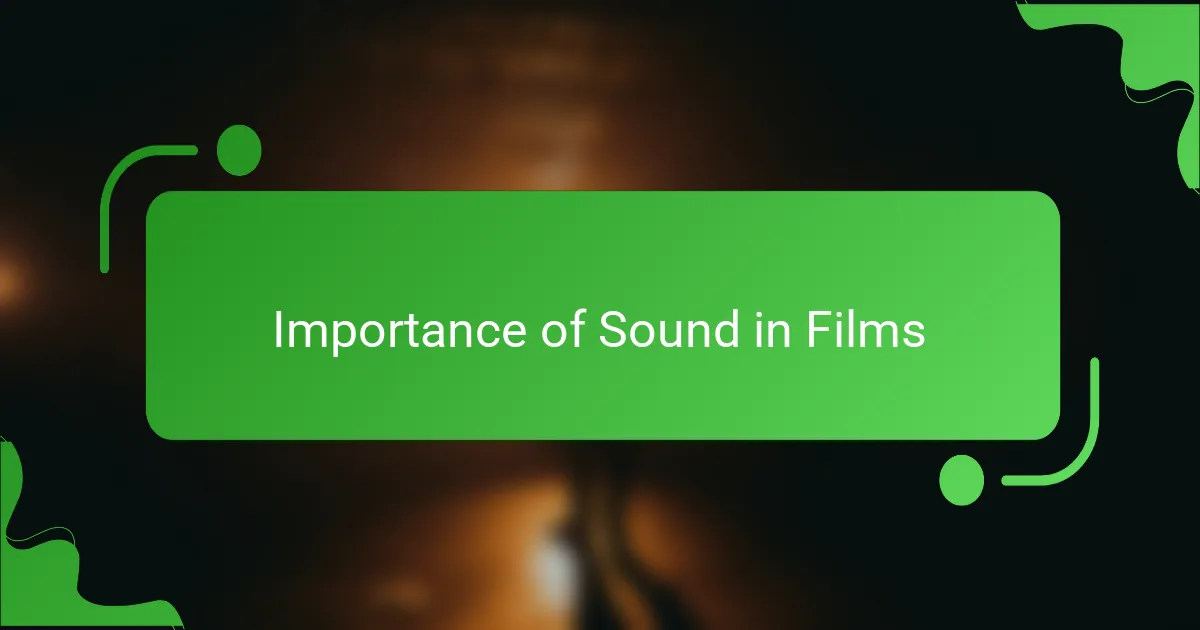
Importance of Sound in Films
Sound in films is often the unsung hero that elevates a viewer’s experience. It shapes the emotional landscape, turning a simple scene into something thrilling or heart-stopping. I still remember a short action film I watched, where the subtle sound of footsteps created tension in a quiet moment, making my heart race. Without that auditory cue, the impact simply wouldn’t have been the same.
The importance of sound in films can’t be overstated. It includes not just the score but also sound effects and silence, all of which contribute to storytelling. Here’s a quick breakdown of how sound plays a critical role:
- Emotional Engagement: Music and sound effects enhance the emotional weight of scenes, drawing viewers deeper into the narrative.
- Atmospheric Building: Ambient sounds create a convincing world, whether it’s the bustle of a city or the eerie silence of a desolate area.
- Character Development: Unique sound signatures can help define a character’s personality or intentions, giving viewers subtle cues about what’s to come.
- Pacing and Rhythm: The right sounds can quicken the pace of a scene or slow it down, setting the mood for dramatic reveals or high-energy chases.
Understanding these elements makes me appreciate action films on a deeper level. The way sound interplays with visuals can transform an ordinary moment into something unforgettable.
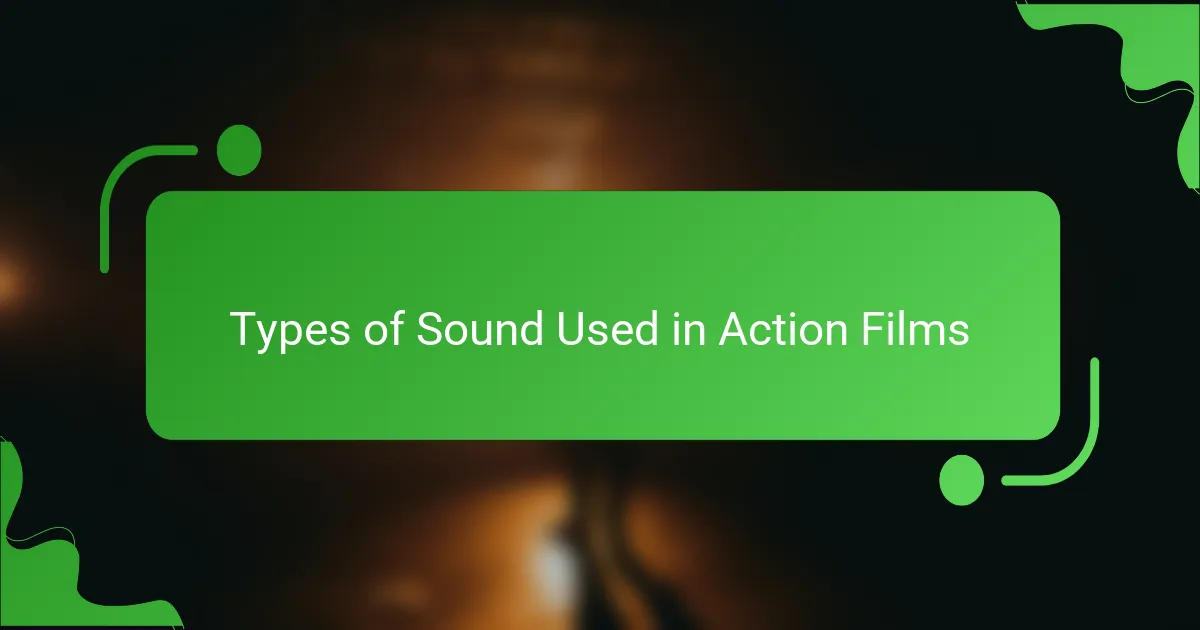
Types of Sound Used in Action Films
When I think about the types of sound used in action films, I am often fascinated by how integral they are to the storytelling. There are primarily three categories of sound that come into play: dialogue, music, and sound effects. Each one serves a specific purpose and contributes uniquely to the overall atmosphere of the film. For instance, the pulse-pounding score can elevate a chase scene, making the viewer’s heart race alongside the characters.
Sound effects, especially, can transport me right into the action. The crunch of tires screeching or the impact of a punch can evoke a visceral reaction. I remember watching a thrilling car chase where the sound design made me feel every near miss and twist of the wheel, immersing me deeper into the experience. This layer of sound transforms a good film into an unforgettable one.
Dialogue, while often sparse in high-octane scenes, can deliver crucial emotional weight. I’ve seen moments where a simple line amidst explosions can ground the audience, reminding us of the stakes involved. The interplay of these sound types creates a multi-dimensional experience that keeps me engaged throughout.
| Type of Sound | Description |
|---|---|
| Dialogue | Speeches and conversations that convey character emotions and advance the plot. |
| Music | Scores or soundtracks that set the tone, build suspense, and enhance emotional moments. |
| Sound Effects | Realistic sounds that mimic actions and environments, adding depth and realism to scenes. |
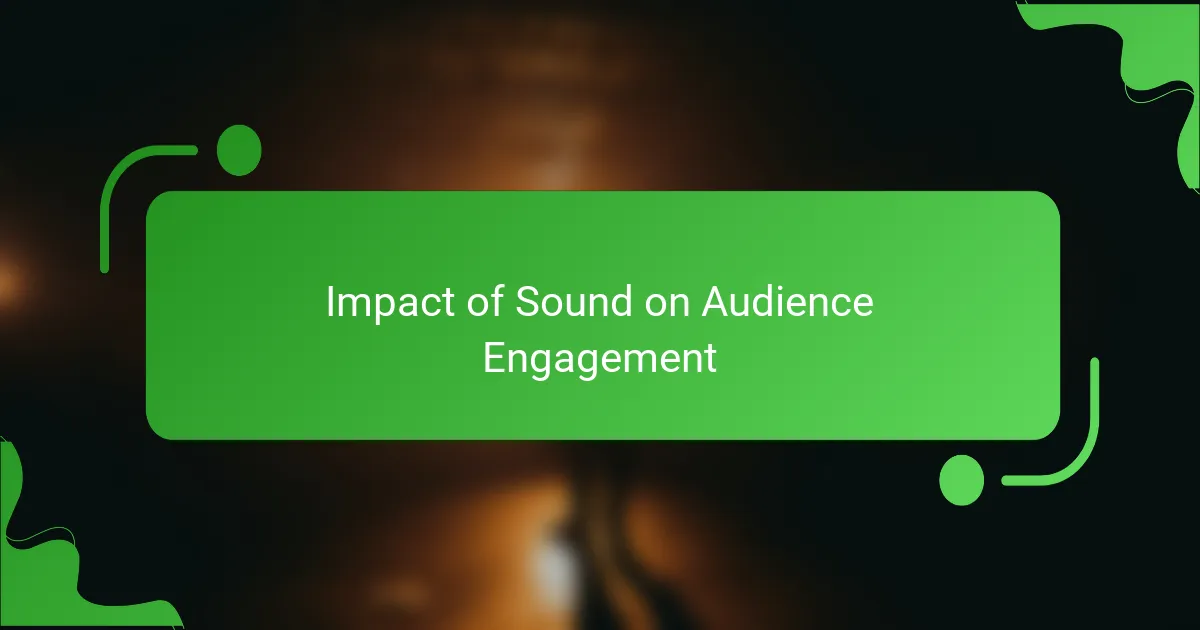
Impact of Sound on Audience Engagement
Sound has a profound impact on audience engagement, shaping how we perceive and react to action short films. When I think of an exhilarating chase, the adrenaline rush I feel is often amplified by the thundering score accompanying the scene. Have you ever noticed how your heart races more when the music swells? It’s amazing how sound can transport us into the moment, making the experience much more visceral.
In my experience, silence can be just as powerful as an orchestral crescendo. I recall a tense standoff in a short film where the absence of sound heightened my anticipation. That stillness allowed me to hold my breath, waiting for the inevitable clash. This stark contrast between sound and silence creates a dynamic engagement that makes the film more memorable.
The combination of sound types—music, effects, and dialogue—works together to keep the audience emotionally invested. I remember being captivated by a character’s emotional outburst right in the middle of a high-action sequence; the dialogue broke through the chaos and grounded the experience. This interplay of sound elements not only enhances the narrative but also keeps us glued to the screen. It’s fascinating to think about how sound can drive our connection to characters and their journeys in such a brief time frame.
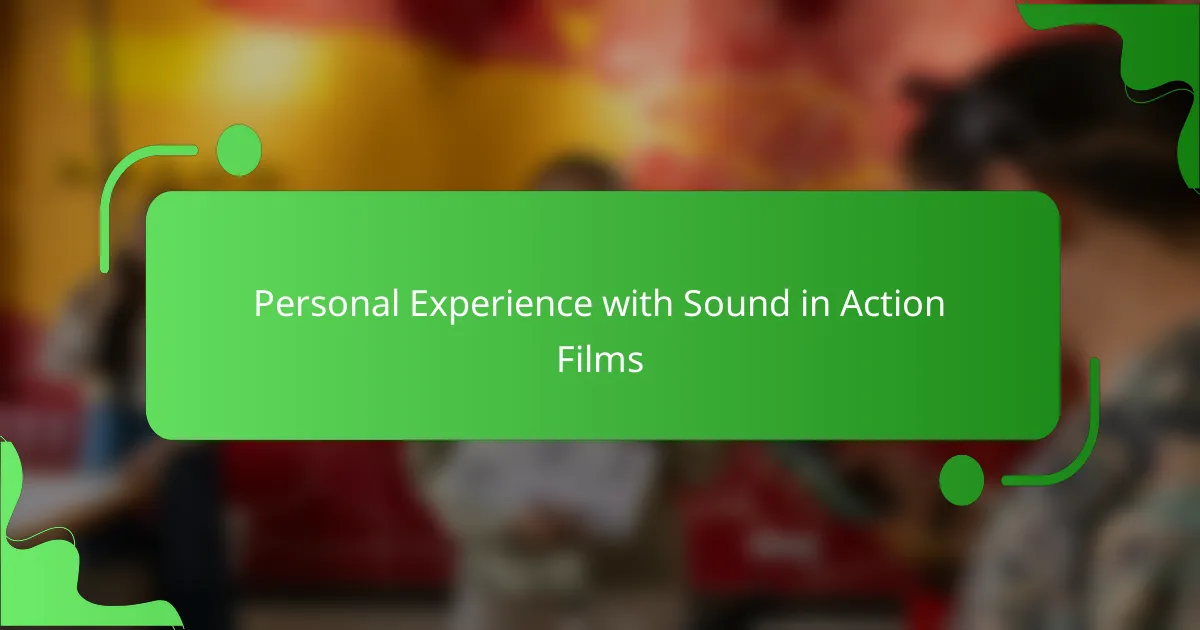
Personal Experience with Sound in Action Films
When I watch action films, sound is often what pulls me into the heart of the experience. It’s fascinating how a well-timed explosion or the clash of swords can send a thrill down my spine. I can recall a specific scene from an indie action short where the sound design intensified the drama and made every punch feel more impactful. Those moments remind me that sound isn’t just a background; it’s a key player in shaping emotions.
In my experience, the right sound effects can elevate a simple chase scene into something unforgettable. I’ve noticed that action films that invest in high-quality sound design often create a more immersive and engaging experience. For example, the faint whirring of a helicopter in the distance can spark a sense of anticipation, heightening the suspense before a big reveal.
Here’s a comparison of two action films I think highlights the importance of sound:
| Film Title | Sound Design Impact |
|---|---|
| Action Film A | Regular sound effects; less impact during key scenes. |
| Action Film B | Dynamic soundscapes; enhances intensity and emotional depth. |
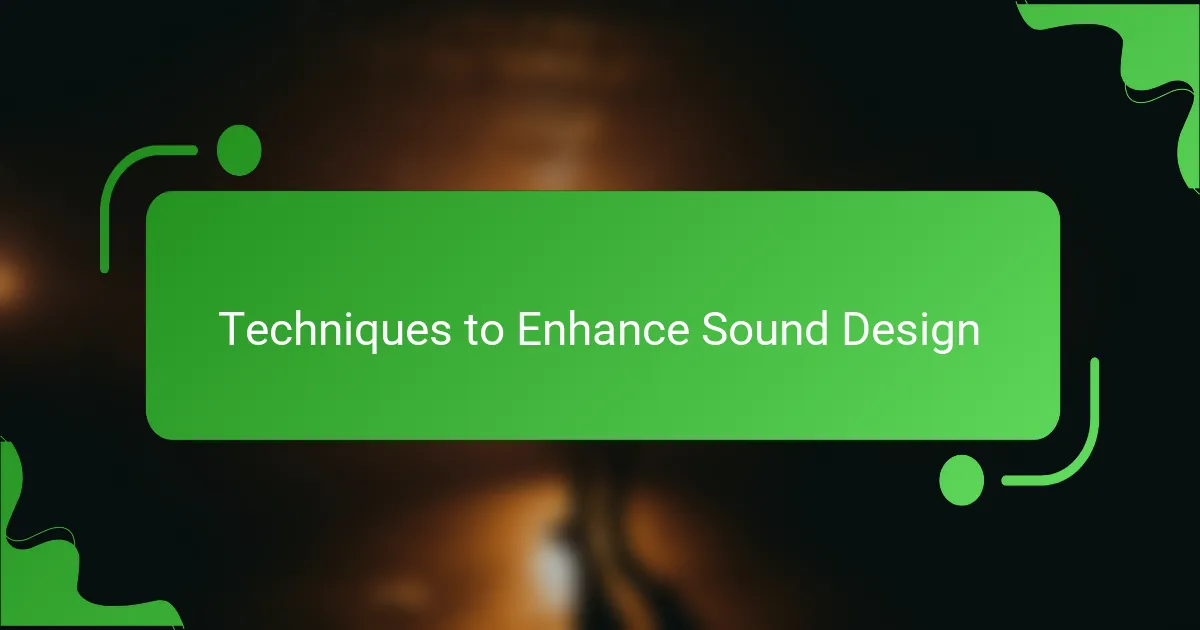
Techniques to Enhance Sound Design
When it comes to sound design in action films, the techniques used can truly elevate the storytelling experience. One method that I find particularly effective is the use of dynamic soundscapes. By layering various sound effects—ambient noises, footsteps, and climactic explosions—a rich audio environment forms that immerses the audience more deeply into the narrative. For example, I remember watching a short action film where the sound of distant gunfire combined with the rush of wind created a palpable tension that kept me on the edge of my seat.
Another technique that consistently stands out to me is the strategic use of silence. It’s fascinating how a moment of quiet can amplify the impact of a subsequent action. I once saw a film that suddenly cut all sound during a pivotal fight scene, which heightened the emotional stakes. This deliberate silence made the following explosions and shouts feel more intense, demonstrating how thoughtful sound design can control pacing and audience emotion effectively.
Lastly, adding depth with Foley sounds is an essential part of sound design. I love how the clinking of weapons or the rustling of clothing mimics real-life movement, making scenes more relatable. It’s all about creating that authenticity that resonates with viewers and pulls them into the excitement of the action.
| Technique | Description |
|---|---|
| Dynamic Soundscapes | Layering various sound effects to create an immersive audio environment. |
| Strategic Silence | Using quiet moments to heighten the emotional impact of scenes. |
| Foley Sounds | Incorporating realistic sounds to enhance authenticity and relatability. |
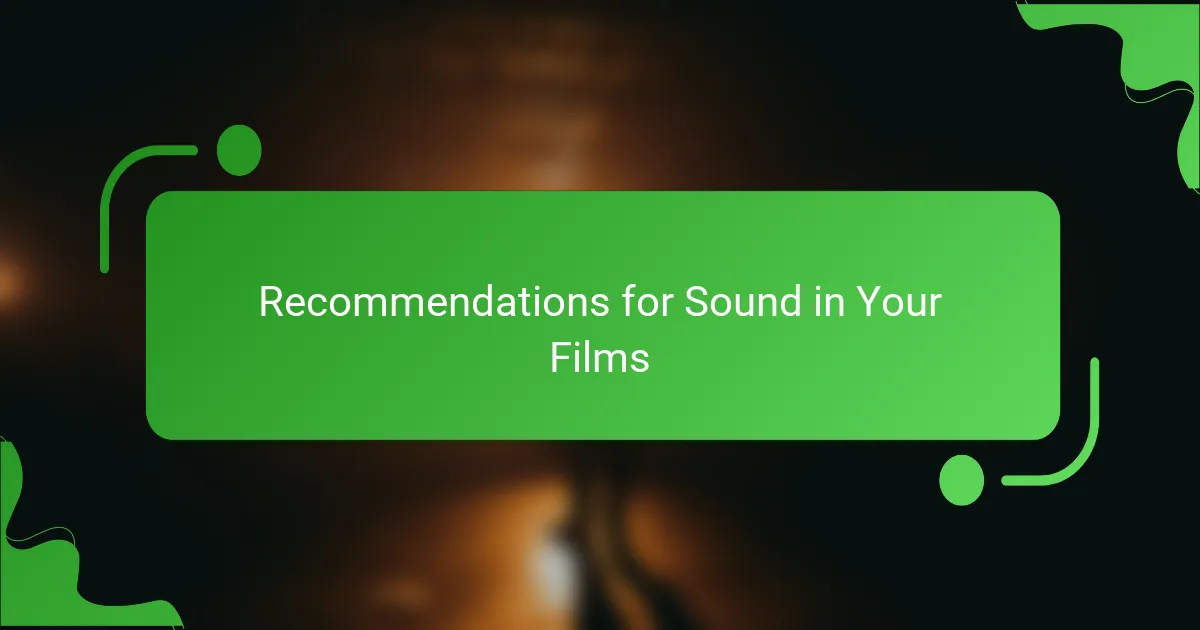
Recommendations for Sound in Your Films
When it comes to using sound in action films, I can’t stress enough how important it is to create an immersive experience. Think about those heart-pounding moments when a chase scene is amplified by a thumping score or the tension built by eerie silence before a climactic confrontation. In my experience, the right sound design doesn’t just enhance the visuals; it elevates the entire narrative, making your audience feel every explosion and every gasp.
I remember working on a short film where we experimented with layered sounds—mixing footsteps, heavy breathing, and distant explosions. The feedback we received was incredible. Viewers felt as though they were right in the middle of the action, which is precisely what you want. Use sound to guide emotions; it’s a powerful tool that can change the entire mood of a scene.
As you plan your sound design, consider not just the score but also the ambiance and sound effects. Balance is key. You don’t want one element to overshadow the others, but rather, they should cohesively blend to create a seamless auditory experience.
| Sound Element | Recommendation |
|---|---|
| Background Score | Choose a dynamic score that complements the action and builds tension. |
| Sound Effects | Use a mix of realistic and stylized effects to enhance the impact of movements and impacts. |
| Silence | Employ moments of silence strategically to heighten suspense and draw in the audience. |
